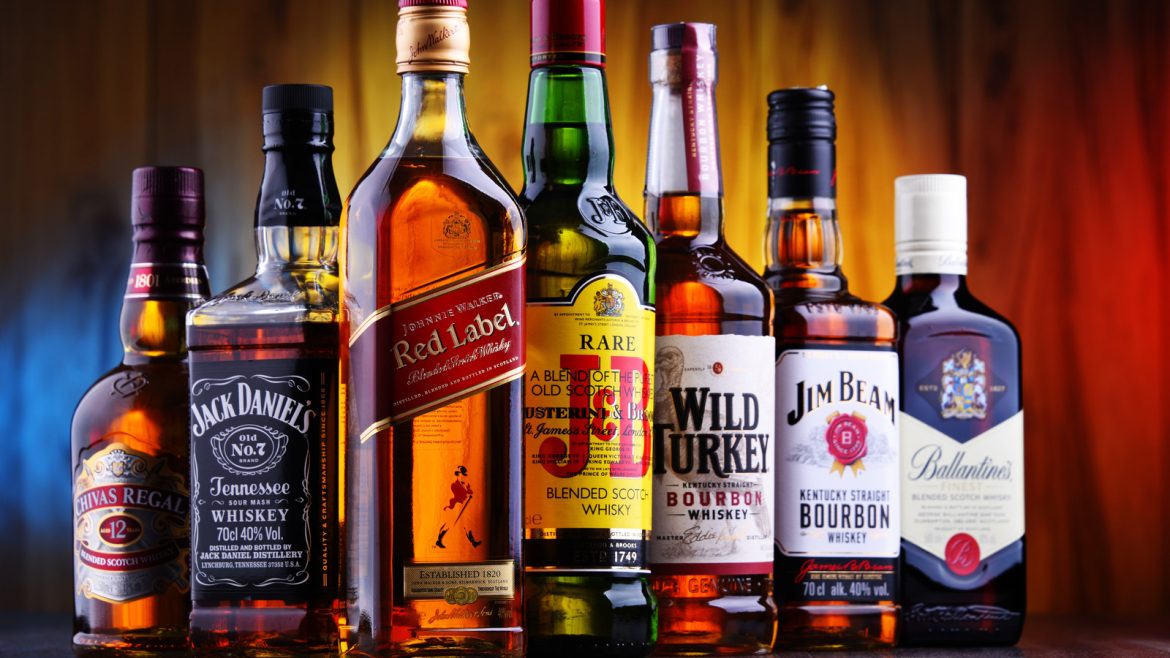Discover how small details on each label can reveal secrets about quality, origin and flavour. Choose with confidence what suits you best.
Knowing some basics, however, can help you find a bottle that suits your tastes and style. Here’s how to understand what you’re buying:

Types of whiskey
First, look at the type of whiskey: bourbon, scotch, rye, or Irish whiskey , for example. Each has specific ingredients, production methods, and aging times that influence its flavor.
- Bourbon : Made primarily from corn (at least 51%) and aged in new, charred oak barrels. This gives it a sweeter, richer profile.
- Scotch : Made mostly from malted barley and aged in oak barrels for at least three years. It may have a smoky note (from peat) or notes of fruit and spice.
- Rye : Produced with at least 51% rye grain, which gives it a spicier, pepperier flavor compared to bourbon.
- Irish Whiskey : It tends to be smoother due to its triple distillation, with flavors ranging from fruity to floral.
Single malt whisky vs blended whisky
If you’re looking at scotch whisky , which is often spelled without the «e,» or other types of whisky, it’s helpful to know the differences:
- Single Malt : Made from 100% malted barley at a single distillery. It is characterized by having unique and often more intense flavors.
- Blended : A mixture of whiskies from different distilleries, which may include both malt and grain whiskies. This results in a balanced and consistent flavour.
Declaration of age
The age stated on the label refers to the youngest whisky in the bottle. In general, longer aging results in deeper, more complex flavours, due to the interaction of the whisky with the wood in the cask.
- No Age Statement (NAS) : Some whiskies do not state their age. They may blend different ages to achieve a balanced flavour profile.
- Age statement : A number (such as «12 years») tells you how long the whisky has been aged. Older whiskies tend to be smoother and more complex, though they also tend to be more expensive.
Alcohol by Volume (ABV) / Proof
ABV (alcohol by volume) indicates the alcohol content. In the United States , «proof» equals twice the ABV. A higher ABV (such as 50% or 100 proof) offers a richer flavor and more warmth , while a standard ABV (around 40%) is usually smoother.
Barrel strength or barrel grade
If a whiskey is labeled «cask strength» or «barrel proof,» it means it was not diluted after aging, so it is usually stronger, with an ABV generally above 50% .
This type of whisky is more intense and is ideal if you like robust flavours. However, it is often best enjoyed with a touch of water to enhance its aromas and flavours.
Distillery information
Most labels will display the name of the distillery, but pay attention to where it was actually distilled if you’re looking for authenticity. For example, the phrase «Distilled in Scotland» on a bottle of scotch whisky guarantees that it was made in Scotland.
Finish or barrel type
Many whiskies specify the type of cask used for aging, such as American oak, sherry or port casks. Casks significantly influence flavour: sherry casks add fruity notes, port casks add a hint of sweetness, and American oak casks bring out nuances of vanilla and caramel.
Bottling Terms
Terms like «small batch» or «single barrel» provide clues about the production process:
- Small Batch : Brewed in smaller quantities, usually with greater attention to detail and specific flavor goals.
- Single Barrel : Each bottle comes from a single barrel, offering a unique flavor profile that can vary between barrels.
Reading a label doesn’t have to be complicated. Understanding a few basics will help you make informed decisions and discover the types and flavors you enjoy most. Whether you’re looking for a rich bourbon, a spiced rye, or a smooth single malt, you’ll have a better idea of what’s in your glass before you take that first sip.

